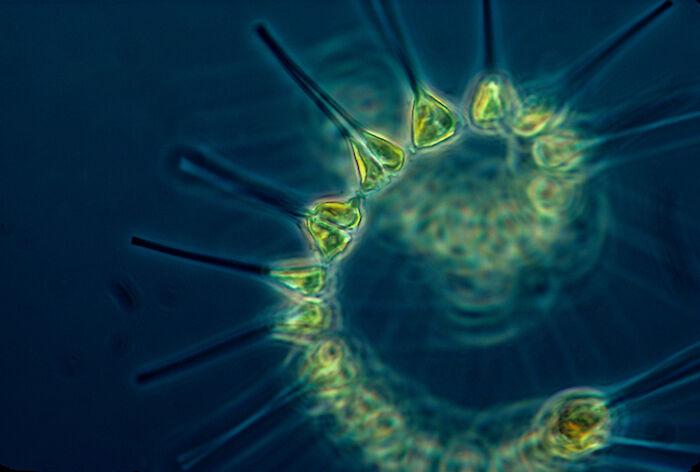
Chlorophyll a is the green pigment in tiny marine algae (phytoplankton) that produces food. Measuring chlorophyll is based on the amount of phytoplankton (microalgae), which uses both nitrogen and phosphorus to grow. Too much algae in the water reduces water clarity, and decomposing algae leads to reduced dissolved oxygen. In a balanced ecosystem, phytoplankton provide food for fish, crabs, oysters, and worms. When too many nutrients are available, phytoplankton may grow out of control and form algal blooms that can harm fish, shellfish, mammals, birds, and even people.
How is it measured?
Chlorophyll a concentrations were measured at approximately 159 stations up to 8 times during the period of interest (March to May and July to September). The proportion of time that chlorophyll a levels were below the threshold levels at each station were calculated and are spatially averaged into reporting regions.
2024 bay data provided by the Chesapeake Bay Program and accessed through the DataHub application: https://datahub.chesapeakebay.net/WaterQuality
Threshold levels
| Salinity Regime | Season | Reference Community Thresholds (µg L-1)* |
|---|---|---|
| Tidal Fresh | Spring | ≤14.0 |
| Oligohaline | Spring | ≤20.9 |
| Mesohaline | Spring | ≤6.2 |
| Polyhaline | Spring | ≤2.8 |
| Tidal Fresh | Summer | ≤12.0 |
| Oligohaline | Summer | ≤9.5 |
| Mesohaline | Summer | ≤7.7 |
| Polyhaline | Summer | ≤4.5 |
* Lacouture et al., Estuaries and Coasts (2006) & Buchanan et al., Estuaries (2005)
